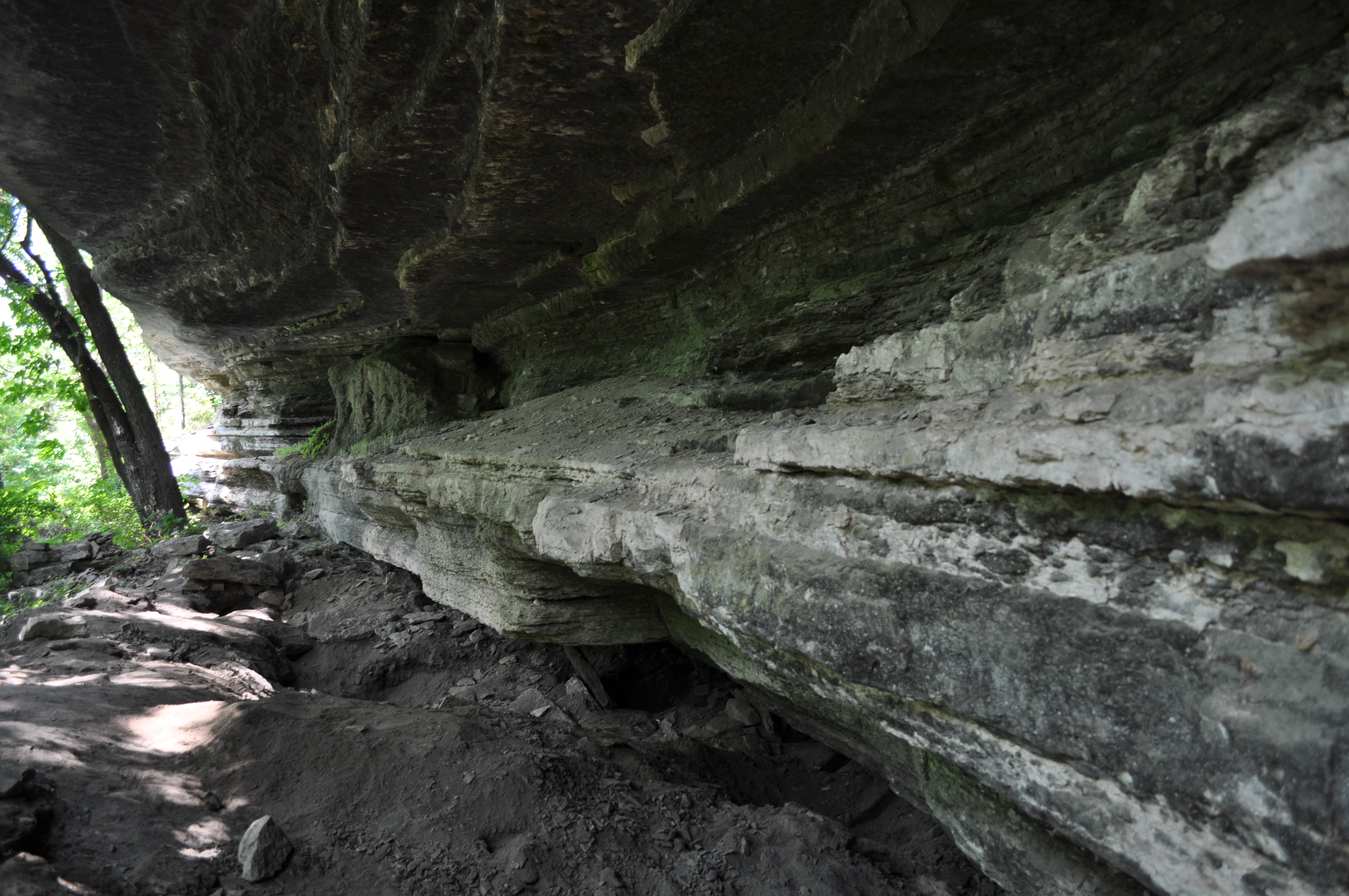The amazing information about Arkansas’s past contained in our bluff shelters will be lost if we do not take steps to protect them. Currently, Arkansas bluff shelters are doubly endangered by both looting and rapid development.

Looting
Looting in bluff shelters is not new. Even Dellinger’s crews reported extensive disturbance at sites that they visited in the 1930s. However, Arkansas bluff shelters face an increasing threat from looting as many regional archeologists and cultural resource managers report a decisive uptick in illegal excavation—especially related to drug use. A recent article in Riverfront Times by Nicholas Phillips discussed this in detail:
On federal property, such at the Ozark-St. Francis National Forest or the Buffalo National River, unauthorized excavation can lead to a felony conviction, stiff fines, and jail time. Beyond the legal ramifications, however, archeologists would like you to consider the ethical issues. Looters recover artifacts, but in the process they destroy the information that archeologists need to answer questions about Arkansas’s past. Artifacts alone don’t tell us all that much. It is why your shoe box full of arrowheads tells us so little compared to an archeologically excavated site. When archeologists dig a site they are not just looking for artifacts. We already know that prehistoric Native Americans lived in Arkansas and we know generally what kinds of artifacts they made. Artifacts are really interesting objects but they, especially out of their original context, are not going to tell us much that we don’t already know.
However, if you put them in context—that is in the place they were left or ended up in the past—we can reconstruct how they got there and when. Now we can answer more complex questions. This is why archeologists excavate very carefully and control for both vertical and horizontal position of artifacts. We want to know the relationship of the artifacts in the ground to each other. On a very basic level, this tells us which ones are older. Most simply put, the artifacts on the bottom were left there first and the ones on top are the most recent. We can also define activity areas by the clusters of artifacts that we find. We can tell if something is a house or living area or a place for processing food, but this is just the beginning. Archeologists are experts in what we call “reading dirt.” We can tell complicated things about how and when an artifact was left in a particular place by looking at the vertical column of dirt left when we dig an excavation unit. Archeologists can also use an array of specialized analyses like radiocarbon dating, pollen analysis from soil samples, and lipid protein analysis of residue recovered on artifacts, but only if they have an intact site to carefully excavate.
Archeologists know things about artifacts out of context but only because we have dug other sites carefully and analyzed the information. However, we can’t answer more complicated questions about particular artifacts unless we have the full picture. That involves a full understanding of where an artifact was found, which can only be obtained and properly recorded for the future by a controlled archeological excavation. This is why looting is so damaging to the archeological record. Even if artifacts are recovered from the looters, the information surrounding them is lost and they become much less valuable to archeologists and to history.
Development
The second threat to the bluff shelters is the rapid growth in parts of the Arkansas Ozarks. While growth is good for the region it can be bad for the archeology and these needs must be balanced.

Currently, Northwest Arkansas is experiencing unprecedented population growth and development. The region has grown by more than 50% in the last decade, and on average, Benton and Washington counties are gaining 944 people each month. In the near future Northwest Arkansas is projected to have the highest growth rate in the central United States.
Extremely rapid development associated with this population growth threatens these archeological resources and has led to bluff shelter sites being included on the list of Arkansas’s “Most Endangered Places.” When these development projects are federally funded or permitted, archeologists are called in to investigate for potentially important sites. Several of the bluff shelter excavations mentioned on this website were conducted in anticipation of the construction of new highways or lakes. Such work at Craddock, Brown Bluff, and Frog Bayou Shelter have all contributed to our understanding of Arkansas’s past. However, these are only a fraction of the development projects that are constantly under way in the region. When we lose bluff shelters to development without archeological investigation, we are losing the same kinds of information destroyed by looters. Moreover, because no program exists at the federal or state agency level in Arkansas to find and inventory the bluff shelter sites or to develop a plan to protect these fragile resources, we do not know the extent of what is being lost.